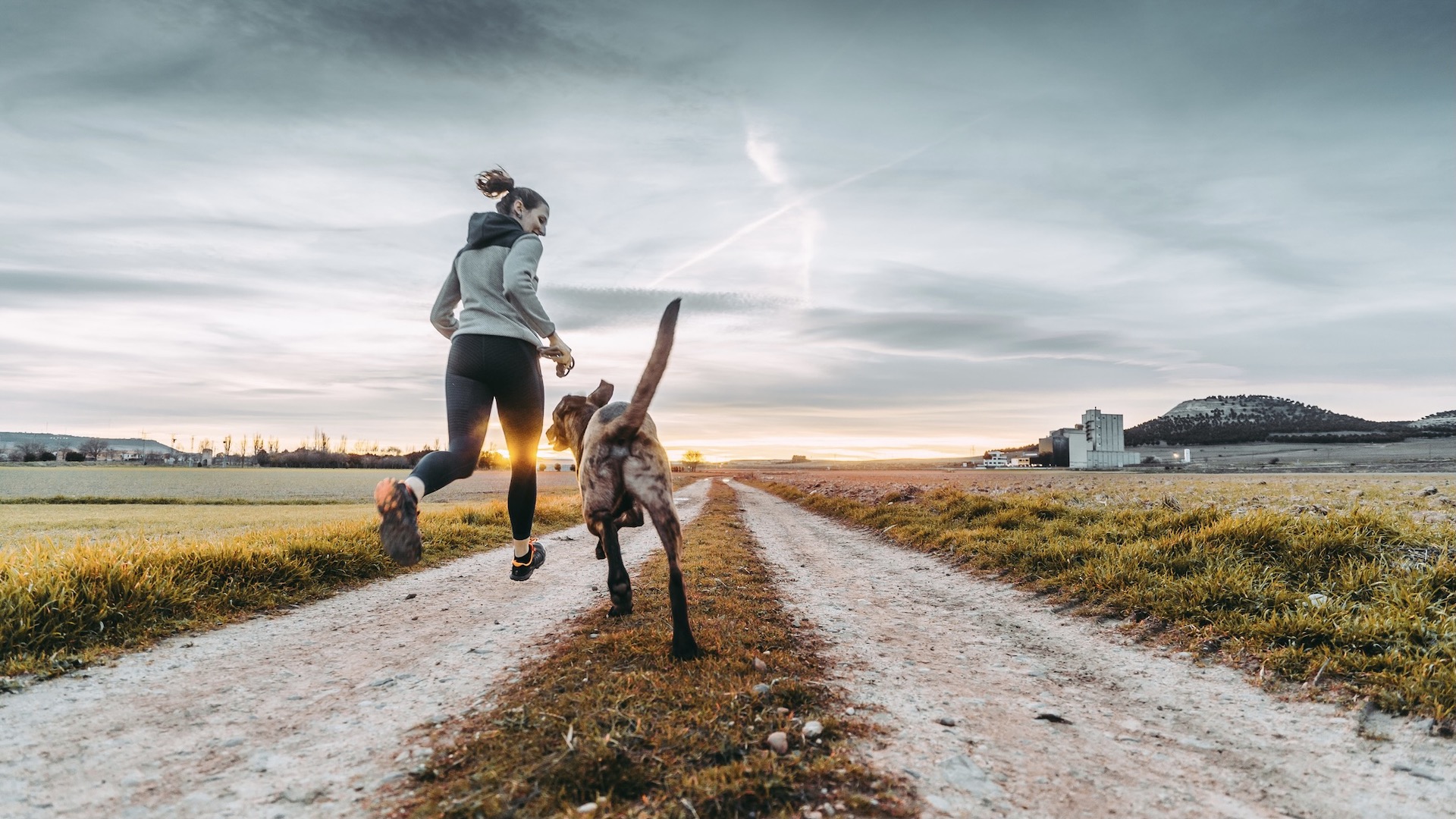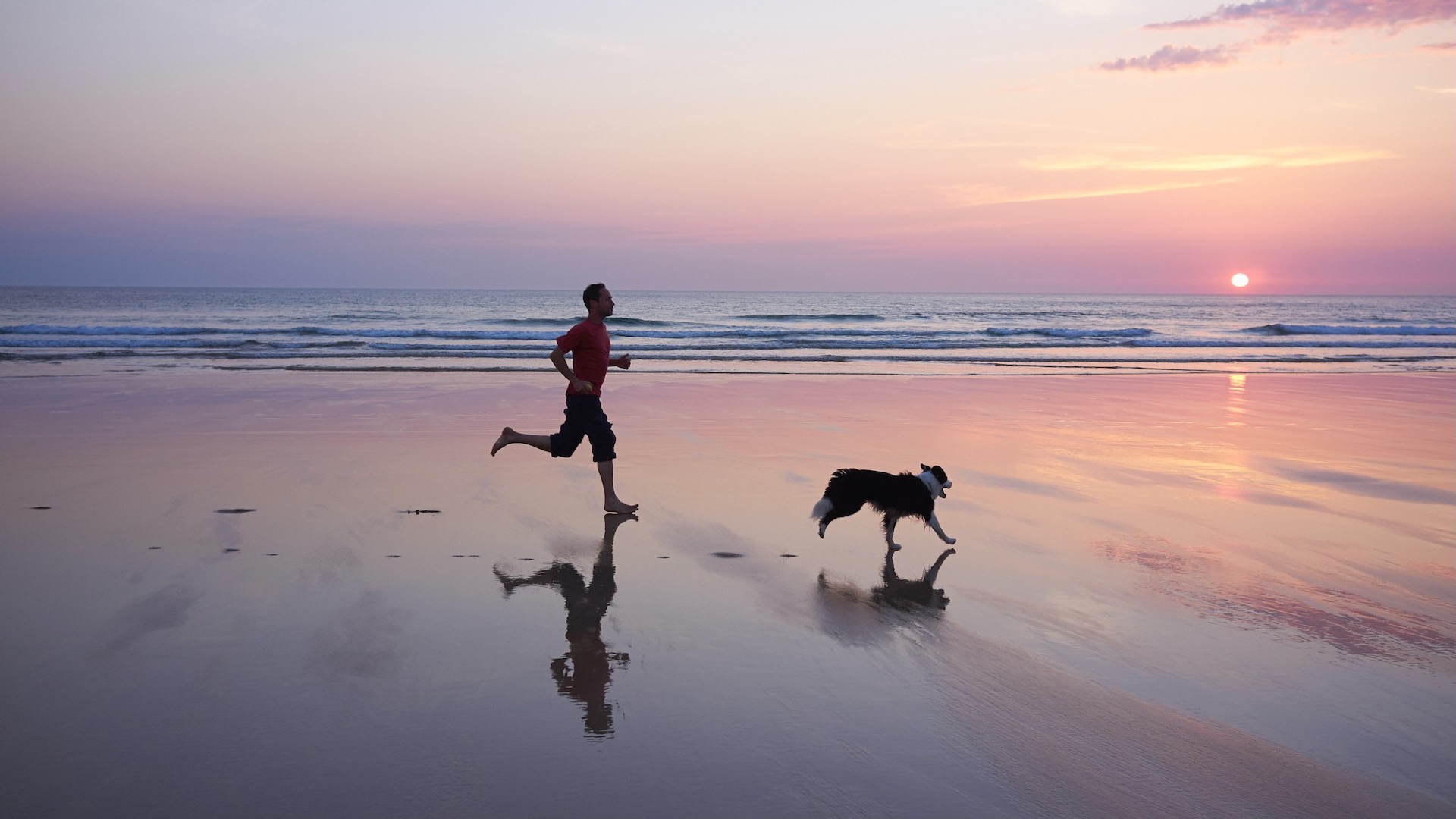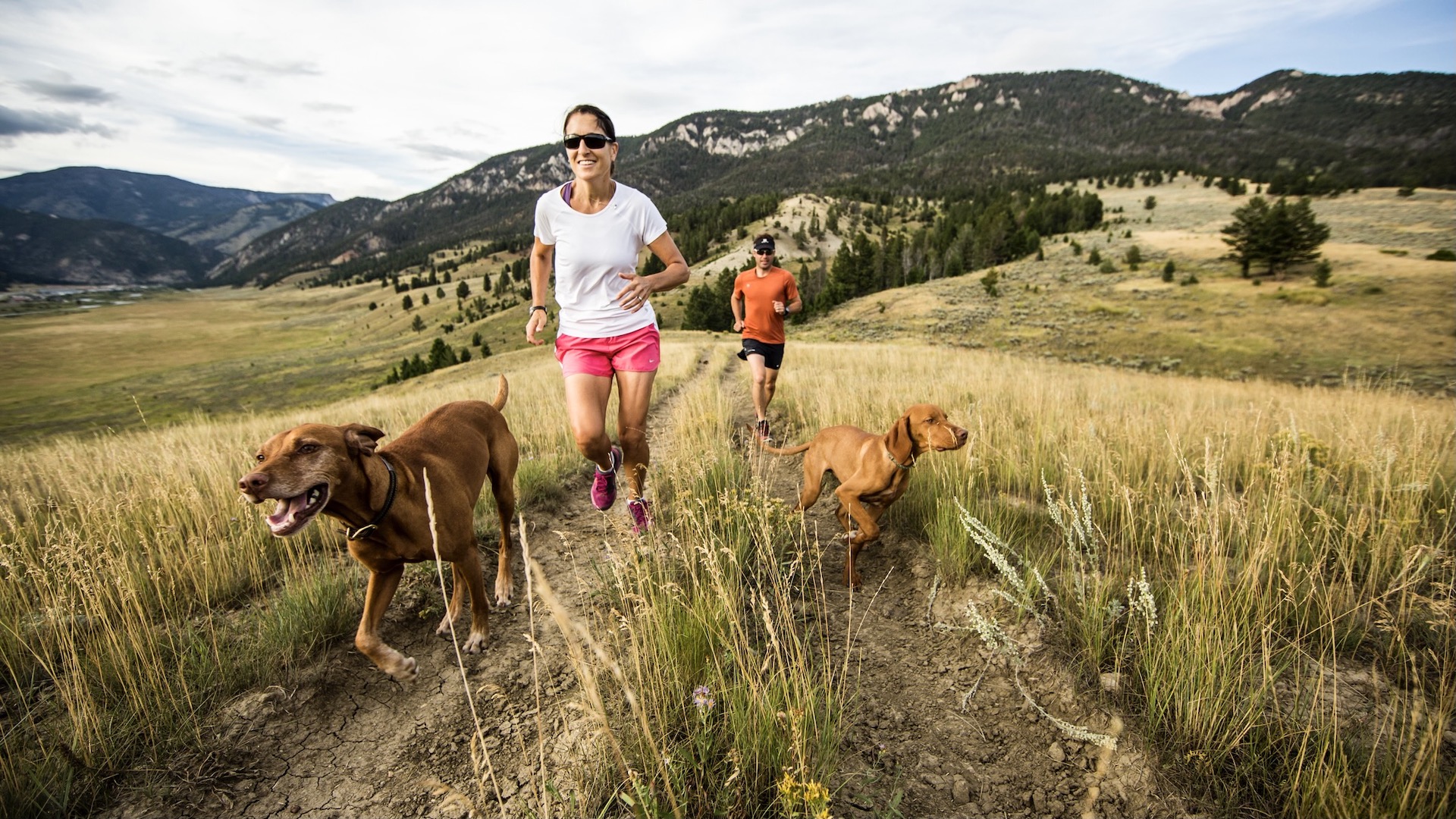Top tips for running with your dog: how to hit the trails with your four-legged friend
How to safely run with your dog, and make sure your good boy or girl has just as much fun as you

A dog makes a great running companion, and there are many breeds that are make ideal companions. A running partner that has the loyalty of a dog is also very hard to beat, plus, as owners, it’s important that we look after the health and fitness of our much loved pooches and running is the perfect form of exercise for many.
We offer a guide to getting started with running with dog – and how can you ensure your pooch enjoys the outdoors activity as much as you do.

What are the best dogs for running?
The first step is to make sure your dog can run with you safely. The best dogs for runners encompass a wide array of breeds, but there are some that shouldn't be encouraged to run with you. Brachycephalic dogs (those with short muzzles), including bulldogs and pugs, should only sprint for short distances.
Personality is also a factor. Not all dogs are keen to run with their owners, although the vast majority will if it's part of their life from early on.
At what age can my dog start running?
There is a general rule that dogs shouldn't do too much running (particularly over longer distances) while they are still growing puppies. If you start too early, you can risk affecting the dog's developing joints and muscles, which can lead to issues in later life.
Experts at the American Kennel Club advise that a six-month-old dog might be capable of taking longer walks or even short jogs if your vet agrees they are in good overall health. If you want to start running regularly with your dog, it's generally advised to wait until it's at least a year old, or ideally 18 months.

Build up the fitness for running with dogs
Just like people, dogs need to take things gradually when starting a new running routine so that they can build up their fitness. If your pet is older, it's particularly important that the dog is checked by a vet to determine their general health. Then, make sure you carefully build up the distance that they walk and run so that they don't become overly fatigued.
Advnture Newsletter
All the latest inspiration, tips and guides to help you plan your next Advnture!
Christian Allen, product expert at Runners Need, also advises: “If your dog is unfit, run at their pace and give them plenty of breaks. You could also try alternating between running and walking to get your dog used to picking up its speed alongside you.”
Trying to force a dog to run further than they are comfortable with will not only be damaging to their physical health, but it might put them off wanting to run with you. A dog should enjoy the running as much as you do, so remember to stay within your pet's comfort zones.

How to run with your dog in hot weather
Hot weather causes the same issues for dogs as it does for humans, including dehydration. For breeds with lots of fur, warm temperatures can have an even bigger impact.
Dogs pant to dissipate heat and if they are too hot they can’t cool down enough this way. If you add humidity to the heat, the impact can be even worse, and it could lead to heatstroke.
The charity Blue Cross reveals the the signs of heatstroke as excessive panting, dribbling, and collapse. “If you suspect your animal is suffering, remove them to a cool place, wet their coat and contact a vet immediately," the organization advises.
The charity also warns that pale-colored dogs are vulnerable to sunburn, particularly their ears, noses and in areas where fur is sparse.
Christian Allen adds: “In warmer temperatures, make sure you check on your dog regularly during your run to see if they are doing OK and, if you think they are getting too hot, stop, take them into the shade and pour some water over them to help them cool down.”
Just as carrying drinking water in a hydration pack is important when you're running in hot conditions, it’s also a good idea to carry water with you for your dog, or run where you know there is fresh water for them to enjoy naturally. Consider running earlier or later in the day to avoid the highest temperatures.
Think about the terrain
We have footwear to protect our feet from the obstacles and abrasions of different terrains, such as the best trail running shoes, and while dogs have pads on their feet, these might be too soft for long runs on stoney and rocky terrain.
The Pet Guide, which is a website dedicated to good dog care, recommends that you aim to condition a dog’s paws. This can be done by walking first and on a variety of surfaces, so that the pads become naturally tougher.
Softer terrain such as grass, dirt and sand, will be easier and gentler for dogs to run on, although many dogs will cope with harder surfaces if they are allowed to naturally condition their paws.
It’s likely that dogs will prefer running on trails rather than running on tarmac for mile after mile.
What kit do you need?
It depends where you will be running as to the list of kit required. Most dogs will prefer to be off the lead when running with a human but it might not be safe – or legal – to do so where you plan to run.
If your dog is on lead, the American Kennel Club advises that you watch your dog for signs that they have had enough, such as excessive panting or lagging behind you. An expert states: “Dogs may run to please their owner, even when they want to stop.”
The best dog leash is one that doesn’t force the dog to always be by your side. Many people now use a bungee leash, such as those favoured by people and dogs who enjoy canicross.
Aside from the right running lead, you will need dog poop bags to clear up after your dog. A container for water could be a good idea if you are running in warm weather or longer distances.
A dog jacket, either waterproof or insulated – will be needed for dogs that find it harder to keep warm in colder weather.
Check out dog-friendly running events
Dogs will enjoy the same sort of outdoors environments that many humans most love, such as parks, hills and mountains. However, many dogs also like the social side dog-friendly events.
For example, owners can take dogs to parkrun if they ensure their pets are kept on a short, handheld and non-extendable lead.
Maverick has regular trail events across the UK, with several races suitable for participants to bring their dogs. They even award dogs with special medals once they cross the finish line.
Many dogs love running with their owners and the benefits are both physical and mental good health. But because dogs can't tell you how they are feeling, it's up to you to look after their welfare. Following the expert tips will ensure both you and your dog enjoy many years of happy running companionship.

Fiona Russell is a widely published adventure journalist and blogger, better known as Fiona Outdoors. She is based in Scotland and is an all-round outdoors enthusiast with favorite activities including trail running, mountain walking, mountain biking, road cycling, triathlon and skiing (both downhill and backcountry). Aside from her own adventures, Fiona's biggest aim is to inspire others to enjoy getting outside and exploring, especially through her writing. She is also rarely seen without a running skort! Find out more at Fiona Outdoors.
